Sony Interactive Entertainment LLC (SIE) announced in October 2019 that it would release a next-generation game console PlayStation®5 (PS5) in the 2020 end-of-year holiday season. It will be the first completely redesigned model in seven years since the current generation console PlayStation®4 (PS4) was launched in November 2013. How will PS5 impact on the game industry? This article will analyze and discuss this matter with its background and emerging new trends based on the current industry situation.
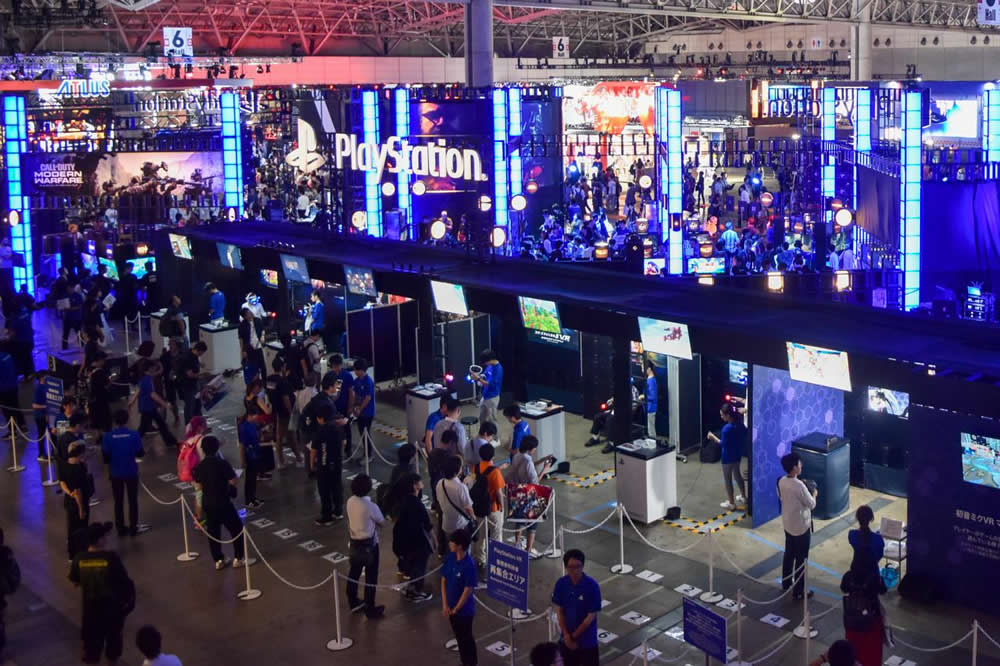 The SIE booth at Tokyo Game Show 2019
The SIE booth at Tokyo Game Show 2019
PS5: A casual gaming PC
Since the beginning of 2019, SIE has been carefully revealing information on its next-generation game console. The first official announcement was made in April. SIE had it published in the Wired online magazine as an exclusive article (in Japanese). Mark Cerny, who was PS4’s lead architect and will play the same role for PS5, revealed its basic specification in the article. In October, SIE President and CEO Jim Ryan, who assumed these posts in April 2019, stated on the official PlayStation blog that PS5 would hit the market in the end-of-year holiday season of 2020. Coinciding with the statement, a follow-up article (in Japanese) was published on Wired.
However, the provided information was limited: CPU and GPU will mount AMD custom chips. The CPU will be based on the Ryzen line, while the GPU will be based on the Navi family. Support is provided at a hardware level to ray tracing, a rendering technique that can generate more real 3D computer graphics images. The storage will be shifted from hard disk to SSD, and the console will mount an optical drive that doubles as a 4K Blu-ray player. In other words, all these features indicate that PS5 will be nothing but “a casual gaming PC.”
PS5’s architecture is very similar to that of Xbox’s next-gen game console, which is regarded as its rival. They are almost like sisters. In fact, their similarity started at the current generation PS4 and Xbox One. PlayStation®3 (PS3) had an originally designed Cell as the core of its architecture. However, this feature made it difficult to develop games for PS3, which ended up losing considerable part of the huge market share obtained by PlayStationR2 (PS2). SIE learned a lesson and used a PC-based safe architecture on PS4. PS5 will follow suit.
The situation is the same about PS5’s two innovations that were stated on SIE’s official blog: the use of haptic technology (to create tactile experiences) and the mounting of adaptive triggers on the controller. Xbox One has already used similar technologies in its dedicated controller. The haptic technology was also employed in Nintendo Switch, which is the current generation video game console by Nintendo Co., Ltd., becoming a key element of the dedicated controller Joy-Con. SIE will finally be able to catch up with competitors with the release of PS5.
The use of haptic technology in PS5 can be related to the dedicated virtual reality system PlayStation®VR, although SIE has yet to clarify the PS VR successor. Mark Cerny merely told in the above-mentioned article that the current generation PS VR would be compatible with the new console. The support for audio input will be provided similarly. As VR games need input devices more innovative than before, I suppose PS5’s controller may be designed to function perfectly in VR games, too.
Balancing AAA and indies in reorganized SIE
Let’s get back to the main topic. Since PS4 was released in 2013, the main player in the video game industry has been shifting from home game consoles to mobile games. Research company newzoo estimates that revenues of the global games market, which stood at $70.4 billion (approx. \7.6 trillion) in 2013 (*1), will increase to $152.1 billion (approx. \16.4 trillion) in 2019 (*2), a 9.6 percent year-on-year increase. The share of mobile games will also rise from 17.4 percent (including tablet games) to 45 percent, while the share of home console games will decrease from 43.4 percent (including mobile game machines) to 32 percent.
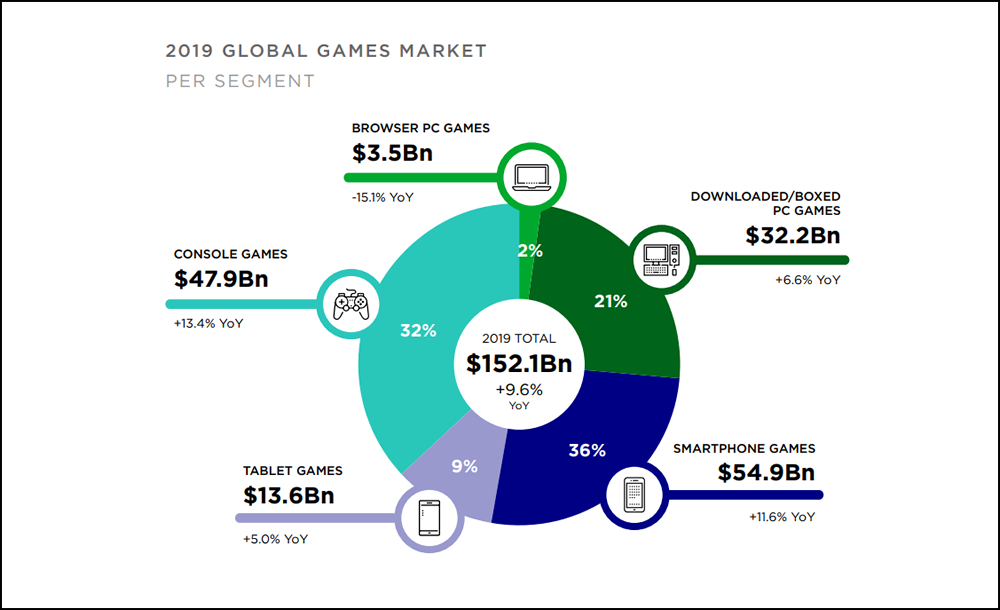 Data from Global Games Market Report
Data from Global Games Market Report
Nonetheless, the home console game market in value terms is estimated to increase from $30.5 billion (\3.2 trillion) to $47.9 billion (\5.1 trillion). This indicates that the segment benefits from the overall market growth. On the other hand, in the era of the next-generation game consoles, full-scale game streaming service will start to realize playing games without relying on terminal specifications. The streaming service, typically Stadia by Google and xCloud by Microsoft, will enable games of as high quality as home console games to be played at smartphones and tablets.
This being the case, high-quality, sophisticated game software will be needed once again. That is, in the game industry, developers’ performances totally depend on providing high-quality gaming experiences. This business basic will become a new focus. The point is that the game market is being split between AAA games (large-scale epic games) and indie games (developed by independent individuals or small teams). The rapid growth of indie games for the current generation consoles is noteworthy. Now, AAA games and indie games work together in the game business like the two wheels of a vehicle, and it is necessary to keep a good balance between the two categories (*3).
Under these circumstances, SIE conducted drastic restructuring to prepare for PS5. Notable is the leadership change of SIE Worldwide Studios (WWS) announced in November 2019. Hermen Hulst was promoted to Head of WWS, while Shuhei Yoshida left his WWS president position and was assigned to discover and nurture external indie creators. Yoshida took a leading role in PS VR and is well-versed in indie games. This move indicates that SIE regards AAA and indies as the indispensable pair of game content.
It is not clear whether indie games will remain important in the game business. There is a concern that it will probably not under the present conditions, mainly because the recognition of indie games has resulted in making larger-scale, more industry-oriented indie games, while their initial originality and enthusiasm for doing something challenging seem to be fading. Today, the mainstay of indie games is no longer what “were produced by individuals or small teams at garages and aimed to hit” but what are created by companies to make a profit.
Commercializing today’s indie games
Looking back on history, sandbox video game Minecraft is arguably the most influential indie game in the past decade. This game was started as a personal project by Swedish indie game developer Markus Persson. It was released as a PC game in 2009. Microsoft released its Xbox 360 Edition in 2012, which greatly expanded its user base. In 2014, Microsoft acquired Minecraft and its publisher. Today, the game is one of Microsoft’s main intellectual properties, still increasing users.
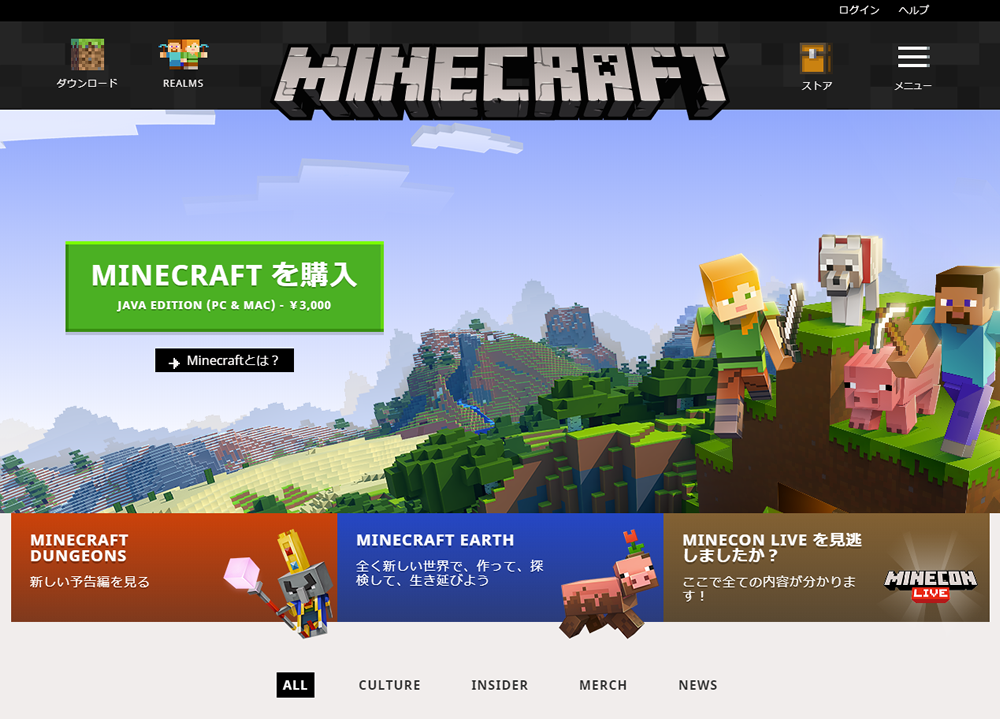 “Minecraft” (from its official website)
“Minecraft” (from its official website)
Prior to Minecraft, some games created by small teams had already been successful worldwide. Doom, released in 1993 as a PC game, is a typical example. This game originated the first-person shooter (FPS) style and had a great impact on the game engine business. Looking back from now, most of the games belonging to the generation of PlayStation® (PS1) were developed to be like indie games in the scale. PS1 for its part became a hit in two different formats, i.e., large-scale blockbusters such as Final Fantasy VII released in 1997 and a genre of avant-garde games.
There is a great difference between these largescale games and indie games. Initially, games were made by companies for business. The situation has been changed by various external factors, such as “The development environment for game engines and other technologies has been improved,” “The internet evolution has made it possible to distribute video games worldwide with a single click,” and “The developed social media has combined with the culture of live broadcast of game playing, changing the way of promoting video games.” As a result, individuals and small groups have become able to create profitable video games. Today, there are publishers and funds specializing in indie games, and even state-level supports are provided (outside Japan, though).
This being the case, it is quite natural that indie games need to be of higher level. “We’re aware that indie games won’t sell if they aren’t rich in content,” said Shunji Mizutani, an executive of Active Gaming Media that publishes indie games, in an interview story (in Japanese). “They will need to have the same high quality as AAA games.” Mizutani is also concerned about today’s tough situation, saying: “Publicity campaigns for indie games are becoming intensified. There is a sign that we will need money to win. If this situation happens, it will be disastrous.”
Mizutani also said during the interview: “Teams of up to 20 or so creators are called indies overseas, while in Japan, individuals or small hobby groups are regarded as indies. These Japanese hobby creators are competing with overseas developers who are almost like venture businesses. The difference between their levels is just widening.”
The point is, when a team of 20 adults create a video game while receiving publisher’s support, fund or subsidy, their activity is usually called “business.” Doing business entails contracts and responsibilities. It is not allowed to give up or delay an ongoing project. Each project also must have the chance of some success. Taking these things into consideration, it is safe to use a familiar development method and imitate a previous hit. In fact, the number of 2D action games using pixel art is increasing in the indie category, mainly because they have a greater demand and a lighter development burden. That is, creation of indie games is becoming unadventurous.
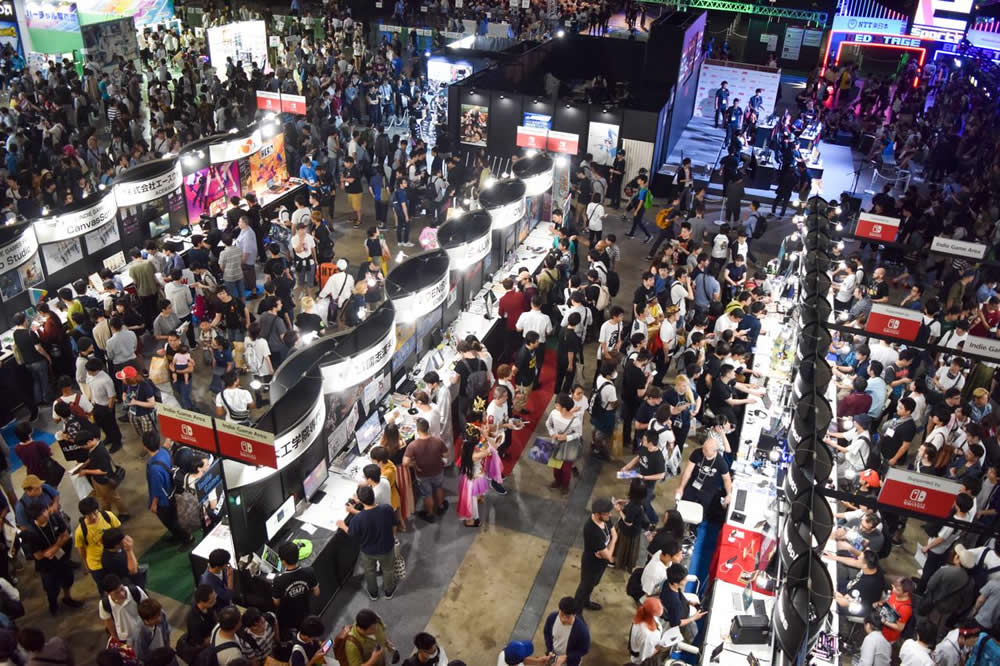 The area for indie video games attracts many people at the Tokyo Game Show 2019.
The area for indie video games attracts many people at the Tokyo Game Show 2019.
This unadventurous approach is, however, to maximize profit, too. To increase profit, it is desired to minimize the difference among consoles by taking it into account that games are ported to various hardware such as PS4, Xbox One and Nintendo Switch, as well as to personal computer. Controllers are desired to have a standard specification for the same reason. In fact, very few indie games have been designed to make good use of the unique feature of Xbox One’s controller or Joy-Con, which were stated in the beginning of this story.
Playing with a similar controller, a similar game console with similar architecture, and a similar display and a similar speaker will naturally lead to develop similar games. Strategies for differentiation, typically by two-screen, stereoscopic Nintendo 3DS, are becoming a thing of the past. To deal with this situation, many indie games are trying to be different from each other not by their game designs but by their world views and storytelling. This is one of the possibilities of games, but I feel the diversity of games is shrinking.
STEM education, a key to successful next-gen game business
Now, there is a new possibility for creating a completely new type of game: each developer makes a self-made original controller and creates a dedicated game. Various these self-made controllers with dedicated games are exhibited at Game Developers Conference (GDC) held in San Francisco in March every year. Many of the exhibitors are developers who are not satisfied with conventional indie games. All the exhibitors are one of a kind and not very marketable. But they can be a groundbreaking approach to developing next-gen gaming experiences as innovative controllers are important to differentiate gaming experiences.
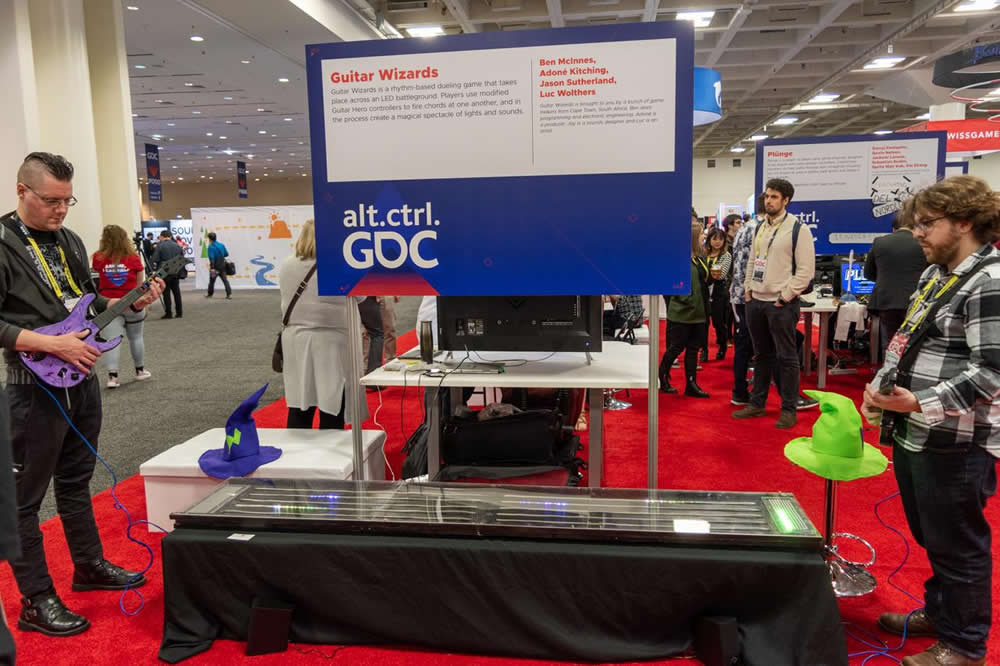 Music game “Guitar Wizards” is on display at GDC 2019.
Music game “Guitar Wizards” is on display at GDC 2019.
Prompting this approach is the STEM education model (*4), which is spreading across the world. In Japan, a computer programming education program as part of the model will start at public elementary schools nationwide in academic year 2020. This program is expected to train in a decade many people to make small applications by themselves. In fact, various educational tools for the program are rapidly disseminating, such as free visual programming language Scratch developed by Massachusetts Institute of Technology on top of the list. Some of these tools can control devices via external interfaces and they work well with self-made controllers.
The STEM education model overlaps the upcoming PS5 generation. That is, PS5 will be the first game console to be released when programming skills are becoming a commodity. This move is expected to realize a world where children with their parents enjoy programming on weekends to make games or even robots by themselves. Thus, a new category of hobby games will have emerged in the decade to come to join the existing categories of AAA games and indie games.
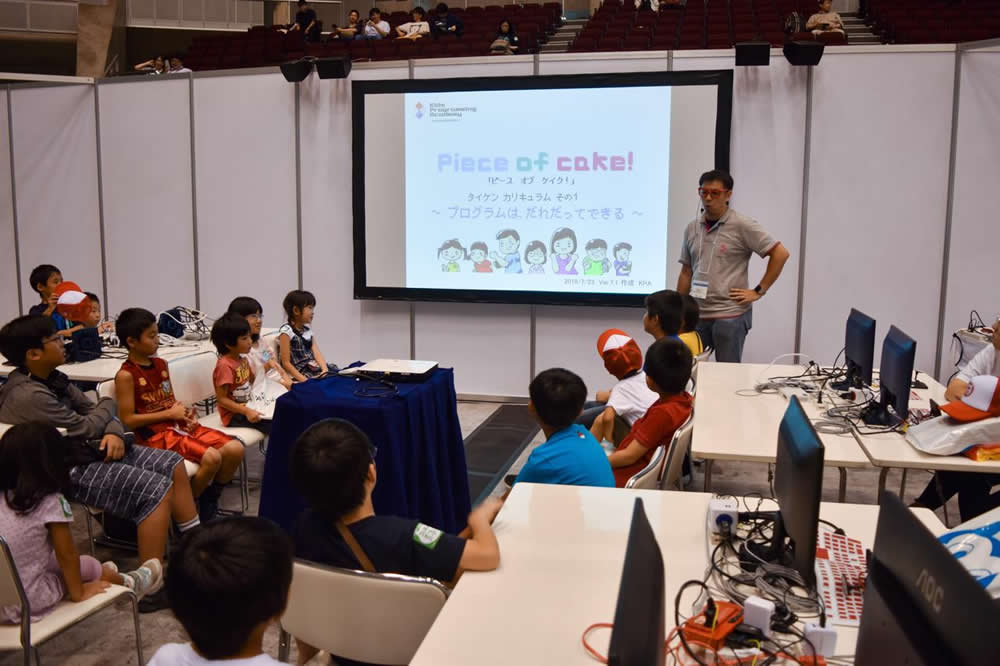 A programming workshop for children held at the Tokyo Game Show 2019
A programming workshop for children held at the Tokyo Game Show 2019
To prepare for this move, game console manufacturers can take this strategy: As they have incorporated indie games into their own hardware, they will incorporate visual programming languages such as Scratch as well as game development environment frameworks for beginners, including Unity Playground, to run them on their own hardware. They also develop a system that allows users of their machines to create games on the machines, not on personal computer, and distribute and share these games to foster their communities. The existing Minecraft communities can be a model.
Here, game console manufacturers must keep one thing in mind. They will fail if trying to confine a community to a development environment closed to their own hardware. In fact, a lot of video games to use user-generated content (UGC) in that format have been released so far and ended up with limited success. The continuing success of Minecraft is largely because its communities emerged on personal computer early on and Microsoft took over and has been helping develop them. In order to succeed, it is essential to make an open community and an open development environment. Coordinating with outside parties will be vital.
Fostering hobby communities and using them for game business will be a completely new approach, which is different from the conventional “pay once and play” game software and the “games as a service” model. Because of this unique feature, it is hard to gain profits in a short period of time. Nevertheless, it is obvious that the PC-based hobby game culture will develop sooner or later, and how to catch this trend is very important for next-gen game consoles. Going back to PS5, a key to its success is how Sony Group companies will come together under the slogan “One Sony.”
(notes)
*1
newzoo, “Global Games Market Report Infographics | 2013,” July 15, 2013.
https://newzoo.com/insights/infographics/global-games-market-report-infographics-2013/
*2
newzoo, “Global Games Market Report,” 2019.
https://resources.newzoo.com/hubfs/2019_Free_Global_Game_Market_Report.pdf
*3
The definition of AAA games and indie games is ambiguous. In general, AAA games are large-scale epic titles having big budgets and released by major publishers, whereas indie games have small budgets and are developed and released by individuals, small teams or small and mid-size companies. Although there are no clear standards for them, it is certain that there is a large gap between AAA games and indie games regarding development budget per game. This tendency seems to continue.
*4
STEM is an acronym for Science, Technology, Engineering and Mathematics and collectively represents the education in the four academic disciplines. This is an educational model that started in the United States in the 2000s. It aims to teach children to be able to learn and understand on their own amid developing information technology and globalizing society.
*URL links were confirmed on May 8, 2020.











